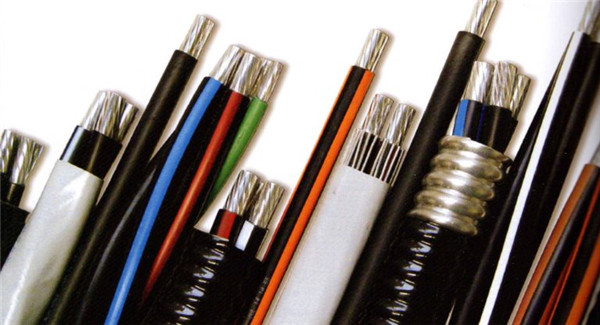The copper-clad aluminum wire is formed by concentrically cladding a copper layer on the surface of the aluminum core, and the thickness of the copper layer is generally above 0.55mm. Because the transmission of high-frequency signals on the conductor has the characteristics of skin effect, the cable TV signal is transmitted on the surface of the copper layer above 0.008mm, and the copper-clad aluminum inner conductor can fully meet the signal transmission requirements.

1. Mechanical properties
The strength and elongation of pure copper conductors are greater than that of copper-clad aluminum conductors, which means that pure copper wires are better than copper-clad aluminum wires in terms of mechanical properties. From the point of view of cable design, pure copper conductors have the advantages of better mechanical strength than copper-clad aluminum conductors
, which are not necessarily required in practical application. The copper-clad aluminum conductor is much lighter than pure copper, so the overall weight of the copper-clad aluminum cable is lighter than that of the pure copper conductor cable, which will bring convenience to the transportation and construction of the cable. In addition, copper-clad aluminum is softer than pure copper, and cables produced with copper-clad aluminum conductors are better than pure copper cables in terms of flexibility.
II. Features and Applications
Fire Resistance: Due to the presence of a metal sheath, outdoor optical cables demonstrate excellent fire resistance. The metal material can withstand high temperatures and effectively isolate flames, reducing the impact of fires on communication systems.
Long-Distance Transmission: With enhanced physical protection and interference resistance, outdoor optical cables can support longer-distance optical signal transmission. This makes them highly useful in scenarios requiring extensive data transmission.
High Security: Outdoor optical cables can withstand physical attacks and external damage. Hence, they are widely used in environments with high network security requirements, such as military bases and government institutions, to ensure network safety and reliability.
2. Electrical properties
Because the conductivity of aluminum is worse than that of copper, the DC resistance of copper-clad aluminum conductors is larger than that of pure copper conductors. Whether this affects the cable mainly depends on whether the cable will be used for power supply, such as power supply for amplifiers. If it is used for power supply, the copper-clad aluminum conductor will cause additional power consumption and the voltage will drop more. When the frequency exceeds 5MHz, the AC resistance attenuation at this time has no obvious difference under these two different conductors. Of course, this is mainly due to the skin effect of high-frequency current. The higher the frequency, the closer the current flows to the surface of the conductor. When the frequency reaches a certain level, the entire current flows in the copper material. At 5MHz, the current flows in a thickness of about 0.025mm near the surface, and the copper layer thickness of the copper-clad aluminum conductor is about double this thickness. For coaxial cables, because the transmitted signal is above 5MHz, the transmission effect of copper-clad aluminum conductors and pure copper conductors is the same. This can be proved by the attenuation of the actual test cable. Copper-clad aluminum is softer than pure copper conductors, and it is easy to straighten in the production process. Therefore, to a certain extent, it can be said that the return loss index of cables using copper-clad aluminum is better than that of cables using pure copper conductors.
3. Economical
Copper-clad aluminum conductors are sold by weight, as are pure copper conductors, and copper-clad aluminum conductors are more expensive than pure copper conductors of the same weight. But the copper-clad aluminum of the same weight is much longer than the pure copper conductor, and the cable is calculated by length. The same weight, copper-clad aluminum wire is 2.5 times the length of pure copper wire, the price is only a few hundred yuan more per ton. Taken together, copper-clad aluminum is very advantageous. Because the copper-clad aluminum cable is relatively light, the transportation cost and installation cost of the cable will be reduced, which will bring certain convenience to the construction.
4. Ease of maintenance
The use of copper-clad aluminum can reduce network failures and avoid aluminum tape longitudinally wrapped or aluminum tube coaxial cable products. Due to the large difference in thermal expansion coefficient between the copper inner conductor and the aluminum outer conductor of the cable, the aluminum outer conductor stretches greatly in hot summer, the copper inner conductor is relatively retracted and cannot fully contact the elastic contact piece in the F head seat; in the severe cold winter, the aluminum outer conductor shrinks greatly, causing the shielding layer to fall off. When the coaxial cable uses a copper-clad aluminum inner conductor, the difference in thermal expansion coefficient between it and the aluminum outer conductor is small. When the temperature changes, the fault of the cable core is greatly reduced, and the transmission quality of the network is improved.
The above is the performance difference between copper-clad aluminum wire and pure copper wire
Post time: Jan-04-2023

